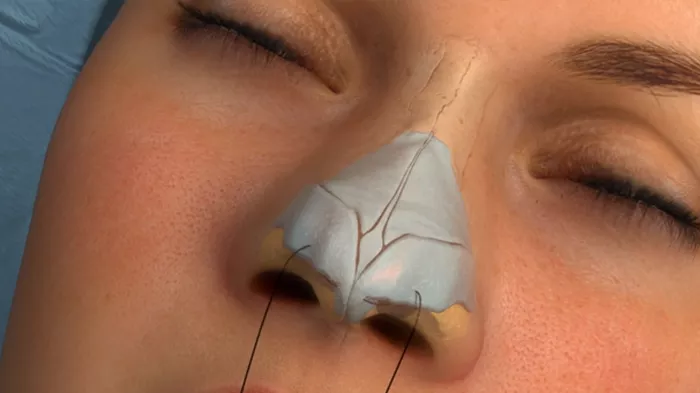Rhinoplasty, commonly known as a nose job, is a surgical procedure that aims to reshape and enhance the appearance of the nose. If you are considering undergoing rhinoplasty, one of the common questions you may have is how long the entire process takes. In this article, we will delve into the various stages of a rhinoplasty procedure and the estimated timeline for the surgery and recovery.
Consultation and Planning Stage
The first step in getting a rhinoplasty is scheduling a consultation with a qualified plastic surgeon. During this initial appointment, you will discuss your goals, concerns, and expectations for the surgery. The surgeon will evaluate your nasal structure, skin condition, and overall facial harmony to determine the most suitable approach for your specific case.
1. Pre-Surgical Assessment and Planning:
Once you and your surgeon have agreed on the desired outcome, a pre-surgical assessment will be conducted. This may include:
- Medical Evaluation: Your overall health will be assessed to ensure you are a suitable candidate for surgery. Your surgeon will review your medical history, current medications, and any pre-existing conditions that may affect the procedure.
- Nasal Examination: Your surgeon will conduct a thorough examination of your nasal structure, including the internal and external components. This examination will help identify any functional issues that may need to be addressed during the surgery.
- Digital Imaging: In some cases, your surgeon may use digital imaging technology to provide a visual representation of the potential outcome of the rhinoplasty. This can help you visualize the anticipated changes and ensure you and your surgeon are on the same page regarding the desired results.
2. Planning and Consent:
Based on the assessment, your surgeon will create a personalized surgical plan that addresses your specific concerns and goals. They will explain the details of the procedure, including the techniques to be used, potential risks and complications, and the expected recovery process. You will have the opportunity to ask questions and fully understand the procedure before providing your informed consent.
Surgical Procedure
The actual rhinoplasty surgery typically takes place in a hospital or an accredited surgical facility. The duration of the surgery itself can vary depending on the complexity of the case and the techniques employed by the surgeon.
1. Anesthesia Administration:
Rhinoplasty can be performed under local anesthesia with sedation or general anesthesia, depending on your surgeon’s recommendation and your preferences. General anesthesia ensures you are completely unconscious throughout the procedure, while local anesthesia with sedation keeps you relaxed and comfortable while the surgical area is numbed.
2. Incisions and Reshaping:
The surgeon will make incisions either inside the nostrils (closed rhinoplasty) or across the columella (the strip of tissue separating the nostrils) and inside the nostrils (open rhinoplasty). Through these incisions, the nasal structures will be reshaped, which may involve adjusting the bone, cartilage, and soft tissues.
3. Nasal Structure Adjustment:
The specific techniques used during the surgery depend on the individual’s unique needs and desired outcome. The surgeon may perform techniques such as osteotomy (cutting and repositioning bone), cartilage grafting, or septoplasty (correcting a deviated septum) to achieve the desired aesthetic and functional improvements.
4. Closing Incisions:
Once the necessary modifications have been made, the surgeon will carefully close the incisions using sutures. If dissolvable sutures are used, they will dissolve on their own over time. If non-dissolvable sutures are used, they will need to be removed during a follow-up visit.
Recovery and Healing Process
After the surgery, you will be moved to a recovery area where you will be monitored until you are ready to go home. It is important to note that the complete healing process and the final results of the rhinoplasty can take several months.
1. Immediate Post-Operative Period:
After the surgery, your nose will be bandaged and may have a splint or cast to support and protect the nasal structures. You may experience some swelling, bruising, and discomfort, which can be managed with prescribed pain medication. It is crucial to follow your surgeon’s post-operative instructions carefully, including guidelines for rest, medication, and avoiding activities that may impact the healing process.
2. Initial Recovery Phase:
During the first week or two following the surgery, you will need to take time off from work or school to allow your body to heal. Swelling and bruising will gradually subside, and you may start to notice initial improvements in the appearance of your nose. It is essential to avoid any activities that could put strain on the nose, such as strenuous exercise or contact sports.
3. Subsequent Recovery and Follow-Up Visits:
In the weeks and months that follow, you will have several follow-up visits with your surgeon to monitor your progress. The swelling will continue to diminish, and the nasal tissues will gradually settle into their new shape. It is crucial to attend these appointments and follow your surgeon’s advice regarding post-operative care, including any restrictions on physical activity.
4. Final Results:
The final results of a rhinoplasty may not be fully evident for several months. As the residual swelling subsides and the tissues heal, you will notice the true transformation of your nose. It is essential to have realistic expectations and understand that the healing process is gradual.
Conclusion
The timeline for getting a rhinoplasty varies depending on several factors, including the initial consultation, pre-surgical assessment and planning, the duration of the surgery itself, and the recovery and healing process. From the first consultation to the final results, the entire process can span several months. It is crucial to consult with a board-certified plastic surgeon, carefully follow their instructions, and have realistic expectations about the outcomes. By understanding the stages of a rhinoplasty procedure and allowing ample time for recovery, you can embark on this transformative journey with confidence, ultimately achieving the nose you desire.

